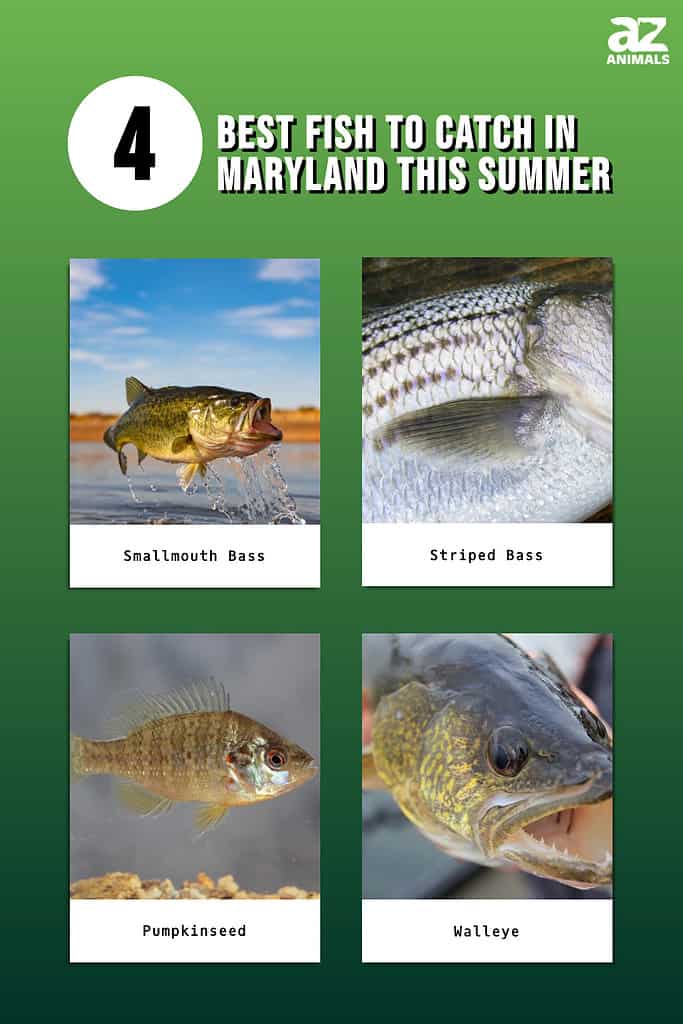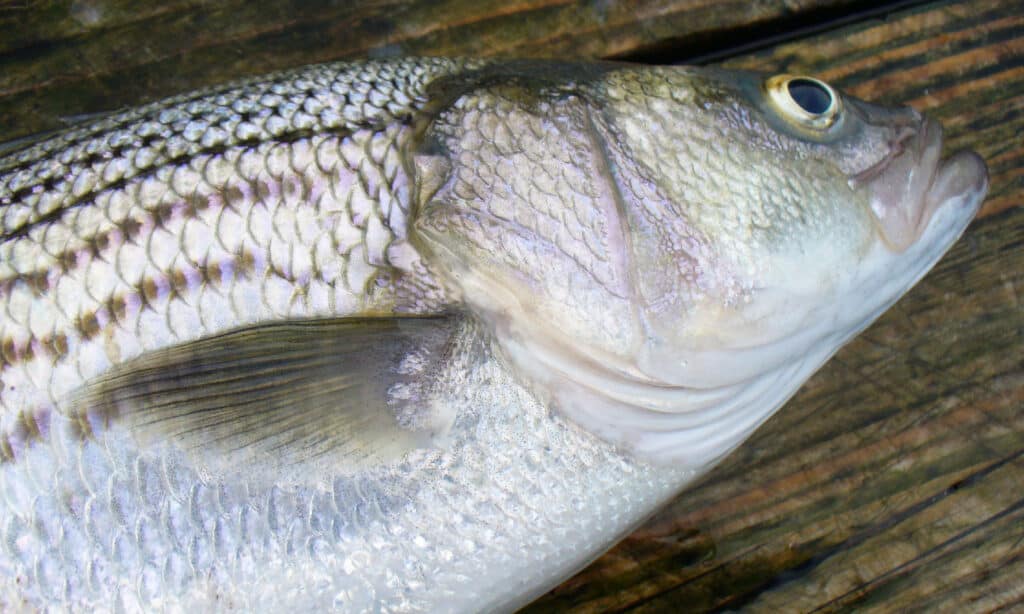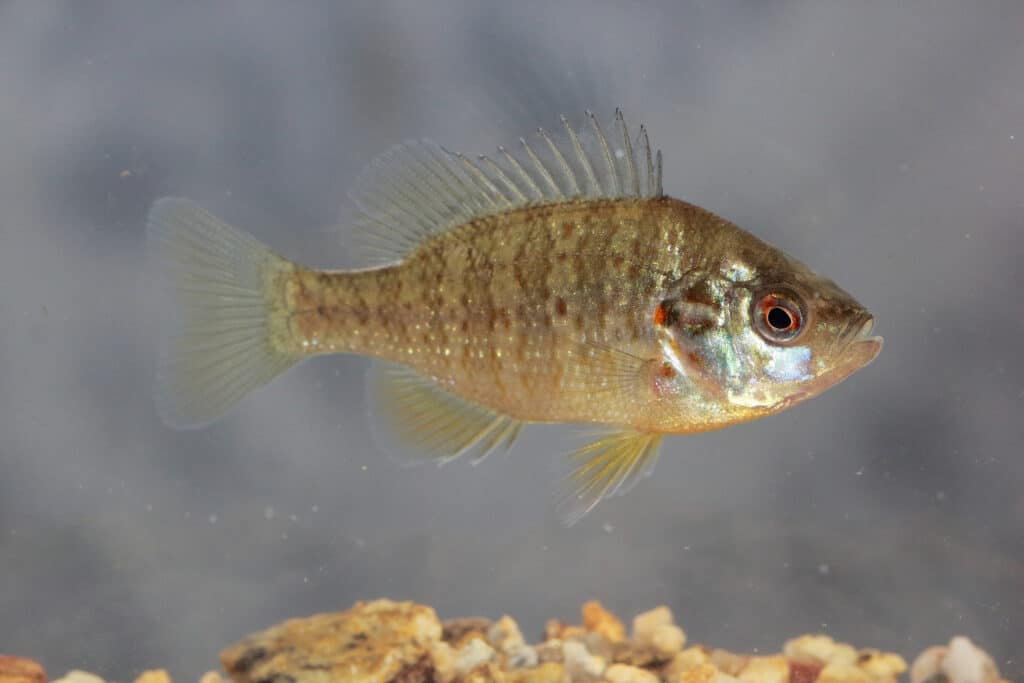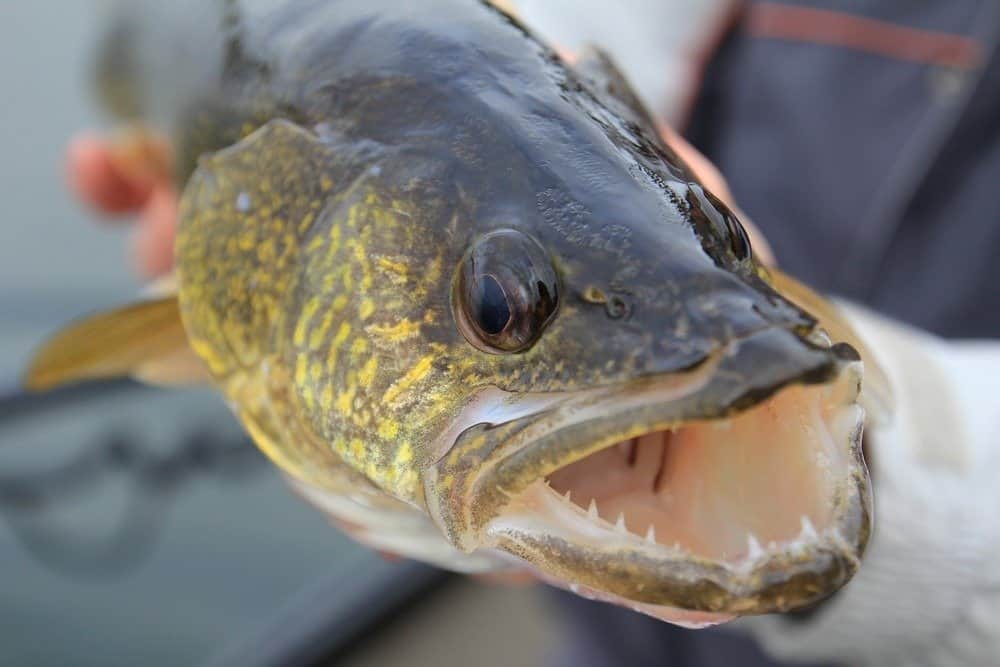The sport of fishing in Maryland is a lot like it used to be, but with one major difference. Now, anglers have an in-depth understanding of fish behavior. If you know how a fish thinks and acts, you can always be one step ahead. You’ll be able to pick the best lures, go to the right places, and start fishing at prime feeding times.
To help make things easy, we’ve put together this article about the best fish to target this summer. We’ll explain how these fish act so you know how to outsmart them!
Keep reading to discover the 4 best fish in Maryland this summer.

1. Smallmouth Bass

Smallmouth bass are regularly stocked in Maryland.
©Ryno Botha/Shutterstock.com
Sometimes referred to as green, brown, or black bass, the smallmouth bass is a terrific game fish. The smallmouth belongs on our list of the best fish to catch in Maryland this summer for a few reasons. For one, this is one of the feistiest North American freshwater game fish. If it’s your first time reeling in a small mouth, you’ll be surprised by how much of a fight they can put up. These fish make impressive leaps, frantic tail walks, and have all sorts of other antics. Their body shape is perfect for having precise maneuverability underwater and at high speeds. The most intense fight will come from stream smallmouth. They’re especially feisty when you hook them on a light line.
Even though these are one of the most challenging freshwater game fish, they’re not the largest. On average, a smallmouth bass weighs between 1 to 2 lb. A four-pounder qualifies as a real trophy, but it will take a 5 to 7-lb smallmouth to earn bragging rights.
Smallmouths are successfully stocked in Maryland, so there’s always an abundance. You can decide exactly how to approach them too. There are a lot of popular techniques that include casting a variety of lures and drifting with live bait. You can also try fly casting on Maryland lakes and rivers. Casting a variety of lures is the most versatile approach. You’ll be able to incorporate all sorts of presentations, making the fishing enjoyable and rewarding.
2. Striped Bass

Striped bass roam in massive schools.
©iStock.com/Coast-to-Coast
Are you looking for a fish that roams in massive schools, is a voracious feeder, and can reach large sizes? Then you should set your sights on the striped bass in Maryland.
Striped bass have been recognized along the East Coast of North America as a popular sports fish since the 1800s. These fish can weigh over 50 lb in land-locked lakes and get even larger in saltwater environments.
You’ll find that landlocked stripers like to hang out in deep waters and usually feed in spurts. Whereas sea-run striped bass will roam coastal waters, entering deep and shallow areas. You could describe this fish’s feeding as being moody and unpredictable. Both sea and landlocked striped bass feed in quick spurts.
If you want to tip the odds in your favor, you’ll need to focus your efforts at peak feeding times. The best time to fish for freshwater stripers includes low light conditions, such as early morning and late evening.
Are you fishing coastal waters? Then fish two hours before and after a tide change. If you fish 2 hours before and after a tide change, and it’s also low-light conditions, you’ll have the most success. If you’re trying to catch lunkers, make sure you’re using big bait. Using 12 to 18 in eels will help you catch some phenomenal fish.
3. Pumpkinseed

Pumpkinseed sunfish tend to weigh half a pound.
©iStock.com/Zdenek Macat
Pond perch, sunny, and punkie are all common names for the pumpkinseed. This is one of the most common sunfishes and is easy to recognize. Unlike bluegills, this fish has red and black colors. It has an olive-colored body, noticeable black center, yellow rim, and vibrant red spot on its gill cover.
Pumpkinseed fish are on our list of the best fish to catch in Maryland this summer because they’re abundant. These fish aren’t known for reaching large sizes and rarely exceed 1 pound in size. On average, a pumpkinseed sunfish will weigh about half a pound. These fish are regularly stocked in Maryland and prefer living in cool, shallow waters.
Efforts to remove excessive aquatic vegetation have helped pumpkinseed fish thrive in Maryland. Try targeting shallow lakes, sheltered bays, and slow-moving rivers. Pumpkinseeds mainly feed on insects but have been known to eat small fish and even snails.
Pumpkinseeds made our list of the best fish to catch in Maryland this summer for a few reasons. For starters, these fish have a reputation for always being willing to take the lure or fly. Second, sunfish are perfectly suited for the fly fisherman. Using fly rods of 7 to 8 ft in length with number five or six flag lines will help you have great success. Finally, sunfish aren’t shy eaters. Fly fishermen can use surface lures with floating lines to get a lot of bites.
4. Walleye

Walleyes tend to weigh between 1-2 pounds.
©ElvK/Shutterstock.com
Walleyes have been a favorite among anglers for a long time. These strong muscular fish can grow to be quite large. The world record walleye was caught in Tennessee and weighed an incredible 25 lb! On average, walleyes tend to be between 1 and 2 lb. Their size depends on what the walleyes have available to eat. Trophy-sized fish reach 10 to 12 lb, a common occurrence.
Walleyes are freshwater residents; they rarely wander into brackish waters. These fish can thrive in many environments. But they prefer shallow lakes with cloudy water. The larger the lake, the better. The cloudy water is suitable for the walleyes’ light-sensitive vision. If you’re fishing in clearwater, you’ll have to wait for low light times to get any bites.
You’ll also find a lot of walleyes in the streams and rivers throughout Maryland that have turbid water. The turbid water helps screen out light, keeping the walleye active. You’ll have to practice a lot of patience to be successful when you’re walleye fishing.
The lure presentation needs to be slow and deep. This can be problematic since slow deep lures usually snag on the bottom. To avoid problems, let the jig hit the bottom before using the lift drop lift technique. Twitching the fishing rod will help you achieve the effect. You can also compliment casting lures with live bait, such as a spinner worm combination. Have fun fishing, and keep your eyes open for beautiful Maryland sharks!
The photo featured at the top of this post is © Steve Brigman/Shutterstock.com
Thank you for reading! Have some feedback for us? Contact the AZ Animals editorial team.







